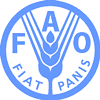 |
|||||||||
|
|||||||||||||||||||
|
|
Global Drive Launched Against FMD 2009-07-23 A major offensive aimed at bringing Foot and Mouth Disease (FMD) under global control has been launched by FAO and the Paris-based World Organisation for Animal Health (OIE).
The initiative, presented and supported at a recent OIE/FAO Global Conference on FMD in Asunciòn, Paraguay, provides for the launch of a global programme for the progressive control of FMD. It will be implemented in the framework of the Global Framework for the Progressive Control of Transboundary Animal Diseases, signed by the two partners in 2004. According to FAO Chief Veterinary Officer Joseph Domenech, “The FMD situation worldwide merits the attention of the international community and donors and it needs to be controlled at source and step by step.” Regional approach needed Foot and Mouth Disease easily crosses national boundaries so that regional and international approaches are needed on the lines of the successful FAO-led Global Rinderpest Eradication Programme (GREP). Launched in 1994 the GREP initiative has resulted in the elimination of a major devastating disease in cattle. Regional FMD programmes will reflect local contexts and diversity – different types of FMD viruses circulate in different regions – and will serve as the basis for the definition of the global campaign. The regional roadmaps will build on the Progressive Control Pathway (PCP) approach promoted by FAO and presented in Asunciòn. This provides a framework for organising actions and investments at country to regional level and measures the progress of participating countries against the disease on a scale of 0-5. At present around 100 countries in the world’s seven FMD Pools, or regions, are at levels 0-3 while 67 countries are at level 4 and 5 and have been recognised as free of FMD by the OIE. Foot-and-mouth disease (FMD) is a highly contagious viral disease of cloven-hoofed animals and is characterised by the formation of blisters and erosions in the mouth, nose, teats and feet of affected individuals. Although not very lethal in adult animals, it causes serious production losses and is a major constraint in international trade. Foot and mouth disease has enormous economic and social consequences, with outbreaks often affecting the livelihoods of herders and of rural households for years in many developing countries. But developed countries can also be hit severely as the United Kingdom, Ireland, France, and the Netherlands were in 2001, when six million animals had to be destroyed at a cost estimated between $11 and $12 billion. It took eight months to eliminate the virus.
|
||||||||||||||||||

|
|
||||||||||||||||||
| home | agri-services | pedigree
pen | news | dairy | beef | machinery property | organisations | site map |
|||||||||||||||||||

